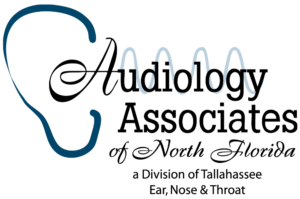Balance Testing
What is a balance disorder?
A balance disorder is a disturbance that causes an individual to feel unsteady, woozy, or have a sensation of movement, spinning, or floating. An organ in our inner ear, the labyrinth, is an important part of our vestibular (balance) system. The labyrinth interacts with other systems in the body, such as our brain, and the visual and skeletal systems, to maintain the body’s position. Any problems involving these pathways can be the source of balance problems.
What causes a balance disorder?
Dizziness, vertigo and disequilibrium are common symptoms that may result from a problem in the vestibular system of your inner ear. The inner ear can be affected by viruses, a build-up of inner ear fluids, or loose calcium crystals. Other common causes of dizziness include anxiety, dehydration, heart problems, vision issues and neuropathy of the feet and legs.
Common Balance Tests
Videonystagmography (VNG)
VNG evaluates the inner ear by using the connections between the inner ear and the eye muscles to determine if this is the cause of your dizzy complaints. During the test, you will wear goggles to monitor your eye movements. You will be asked to follow a light with your eyes and recordings will be made with your head and body in different positions. Finally, cool and warm air will be put into your ears. It is not uncommon for this test to cause dizziness. However, the dizziness is brief, lasting only a few minutes, and most often the dizziness is mild.
Pre-Test Preparation: Do not eat or drink for at least 4 hours prior to the exam unless you are diabetic, in which case please maintain your normal eating schedule, do not take medications that have been prescribed for dizziness for 48 hours before the exam, do continue to take other medications especially for cardiac, diabetes and blood pressure problems, do not wear eye make-up to the appointment (if you do, you will be asked to remove it).
Vestibular Evoked Myogenic Potentials (VEMP)
VEMP testing is commonly performed on patients complaining of dizziness, vertigo, or imbalance, and is often conducted during the same visit as the VNG evaluation to obtain a comprehensive understanding of your inner ear function. The purpose of the VEMP evaluation is to determine if portions of your inner ear, specifically an organ called the saccule, as well as a branch of the auditory nerve, are intact and working normally. The test involves placing electrodes on your neck and putting earphones into your ear which will produce a rather loud clicking sound. You will be asked to recline in a chair and to raise and hold your head up for about one minute. This cycle will be repeated several times.
Pre-Test Preparation: Do not wear a turtleneck shirt, do not take any medications that have been prescribed for dizziness for 48 hours before the exam.
Epley (Canalith Repositioning) Maneuver
One of the most common causes of dizziness is Benign Paroxysmal Positional Vertigo or BPPV. BPPV is caused by calcium particles that become lodged in areas of the inner ear where they should not be. When this occurs, it can cause you to experience a brief spinning sensation when your head is put in certain positions. Commonly, people with BPPV report dizziness when they look up, bend over, or roll over in bed. Fortunately, BPPV is highly treatable with a procedure called canalith repositioning.
Because of the connection between your inner ear and your eye muscles, you will wear goggles to monitor your eye movements during the exam. The audiologist will guide you from a sitting position into a reclined position to determine where in the inner ear the calcium particles have lodged. From there, the audiologist will maneuver your head and body to roll the particles out of the problem area. While BPPV is often resolved after the first treatment, additional treatments are sometimes necessary.
Pre-test Preparation: None. However, it is recommended that following the treatment you avoid activities that would have brought about your dizzy symptoms for the remainder of the day. If you have been taking medication to control nausea, you can continue to take this medication on the day of the procedure. It will not affect this test.
